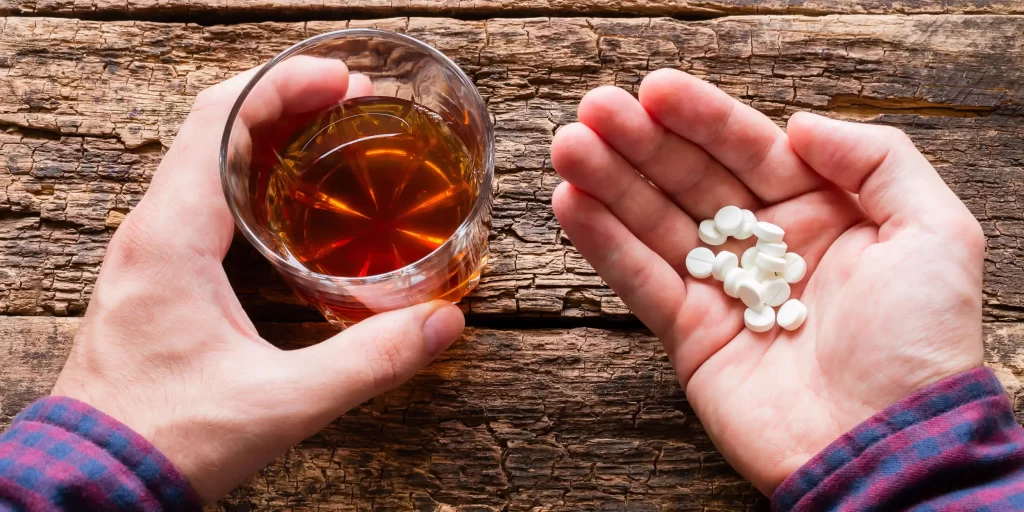
Opioids are pain medications that some people use to get high. Opioids and alcohol are sometimes mixed to achieve a greater euphoric experience. Mixing opioids with alcohol is dangerous and can have life-threatening effects.
Why Do People Mix Opioids with Alcohol?
Some people may mix the two substances without realizing the harmful effects it can have. Opioids are often prescribed to people who have moderate or severe pain. If a person is taking prescription opioids for pain, they should avoid drinking alcohol while on the medication. It is always a good idea for individuals to speak with their doctor about the drug they are prescribed and what interactions it may have with other drugs or substances.
Other people may mix alcohol with opioids believing that doing so increases the euphoria experienced. Opioids are commonly misused due to their effects on the brain and for the high that a person can get from them. When a person uses opioids to get high, they may become tolerant to them and need to take larger amounts to achieve the desired effect. When tolerance develops, some people may try combining opioids with other substances — like alcohol — believing it will boost the euphoria.
Opioid and Alcohol Statistics
Opioid misuse is a significant problem in the United States. In 2018, 2.8% of the population reported having misused opioids in the past year. Alcohol use is even more common, with 65.5% of the population using alcohol in the past year, 24.5% binge drinking in the past month, and 6.1% reported heavy alcohol use in the past month. Of those, only 0.9% received treatment for alcohol use in the past year.

It's time to get your life back.
If you are struggling with addiction and co-occurring mental health, our expert team is here to guide you every step of the way. Don’t wait— reach out today to take the first step toward taking control of your life.
Combining alcohol use with opioids is not uncommon. More than half of people who misuse prescription opioids also binge drink. Binge drinking is defined as drinking four or more drinks for women and five or more drinks for men. People who binge drink are nearly two times more likely to misuse opioids compared to people who don’t drink.
Effects of Combining Alcohol with Opioids
Opioids and alcohol interact with each other because they have similar effects on the body. They are both central nervous system (CNS) depressants, meaning that they suppress the function of the brain and spinal cord, which controls normal functions of the body. Opioids do so by binding opioid receptors in the CNS and inhibiting their action. Alcohol works by interacting with several different pathways in the central nervous system, ultimately resulting in their inhibition.
When the two are mixed together, they have an additive effect. Mixing depressants, such as opioids and alcohol, can cause slowed breathing and a decreased heart rate. If either is slowed too much, it can lead to death. These effects are even more dangerous in elderly individuals.
The side effects of mixing opioids and alcohol include:
- Suppressed breathing
- Decreased or irregular heartbeat
- Nausea
- Vomiting
- Feeling dizzy or losing coordination
- Fainting
- Feeling confused
- Excessive drowsiness
- Coma
Risks of Mixing Opioids with Alcohol
Combining alcohol and opioids significantly increases the risk of overdosing. Since alcohol and opioids suppress neurotransmitter signaling through receptors in the central nervous system, combining alcohol and opioids can lead to severe suppression of the central nervous system function. If suppressed too much, it can lead to death. If you suspect that someone has overdosed on alcohol and opioids, get help immediately by calling 9-1-1 or your local emergency number.
Opioids are highly addictive and a person who misuses them is at risk of becoming dependent on them. When a person is dependent on a drug, they need it to feel normal. They will use the drug despite the other negative effects it may have on their life. Opioids and alcohol dependence go hand-in-hand. A person who misuses one drug is more likely to try other drugs or use more than one drug at a time.
Treatment for Opioids and Alcohol Addiction
There are several treatment options for people who have opioid and alcohol use disorders. Opioid and alcohol addiction treatment will usually involve medical detox, where the person is weaned from substance use with the aid of medications to ease their withdrawal symptoms. Detox will include therapy and emotional support to help the person successfully stop using the drug.
Once they have stopped using substances, therapy will continue to help the person abstain from using substances and address the root of the problem as to why they started using drugs. Dual diagnosis treatment is for people who have co-occurring mental health and substance use disorders. This type of treatment involves treating both disorders simultaneously.
Contact The Recovery Village Ridgefield to speak with a representative about how professional addiction treatment can help. Take the first step toward a healthier future, call today.



